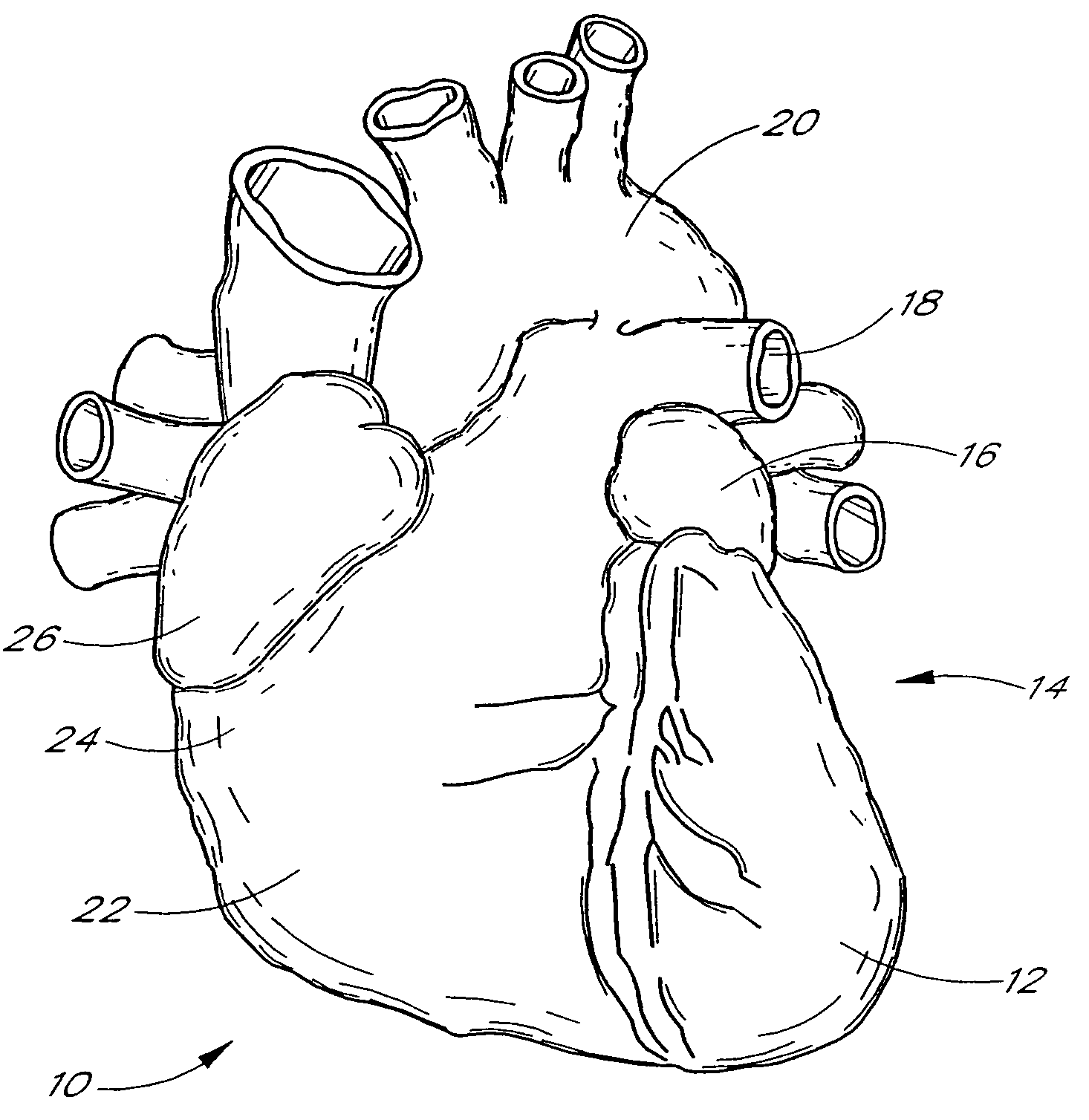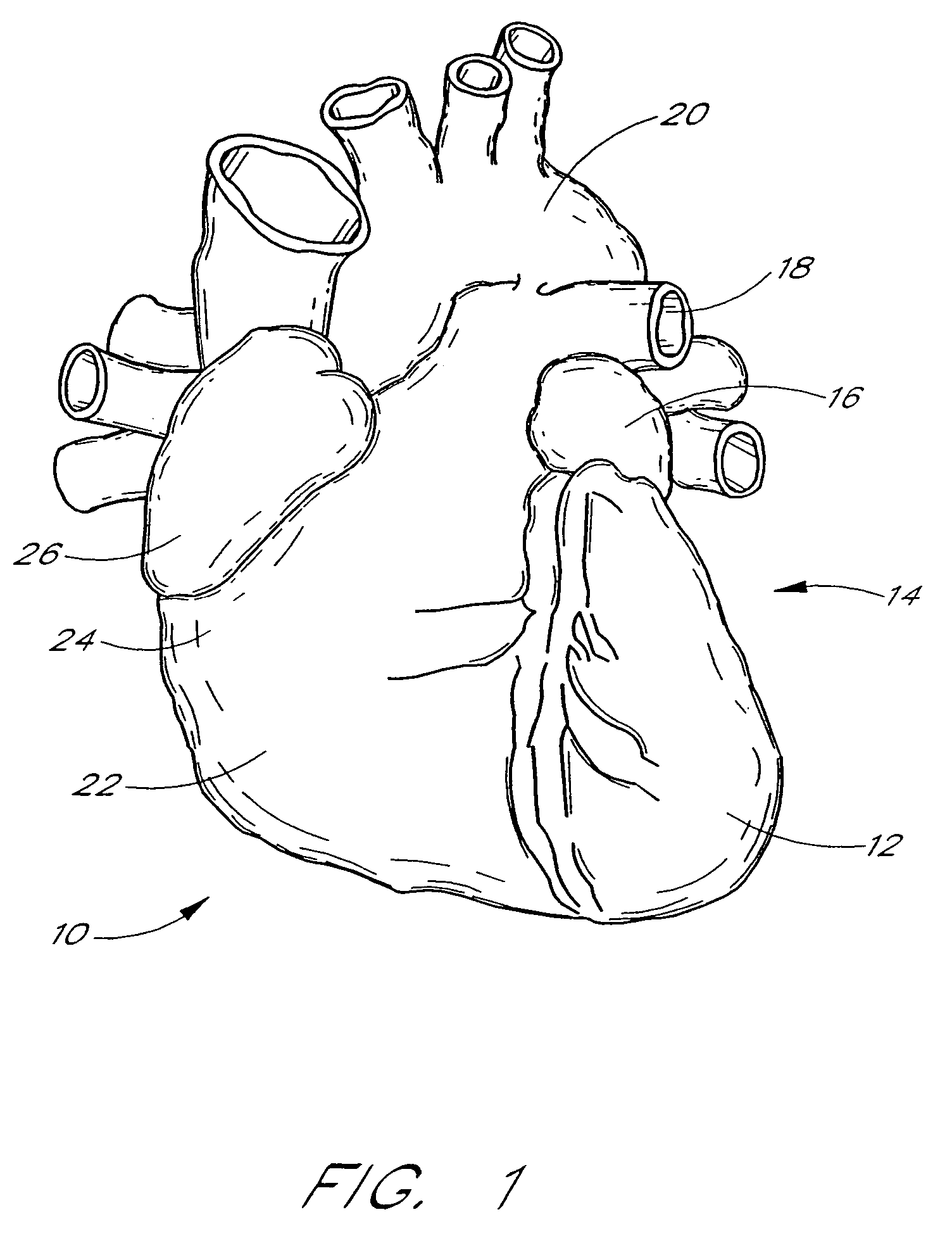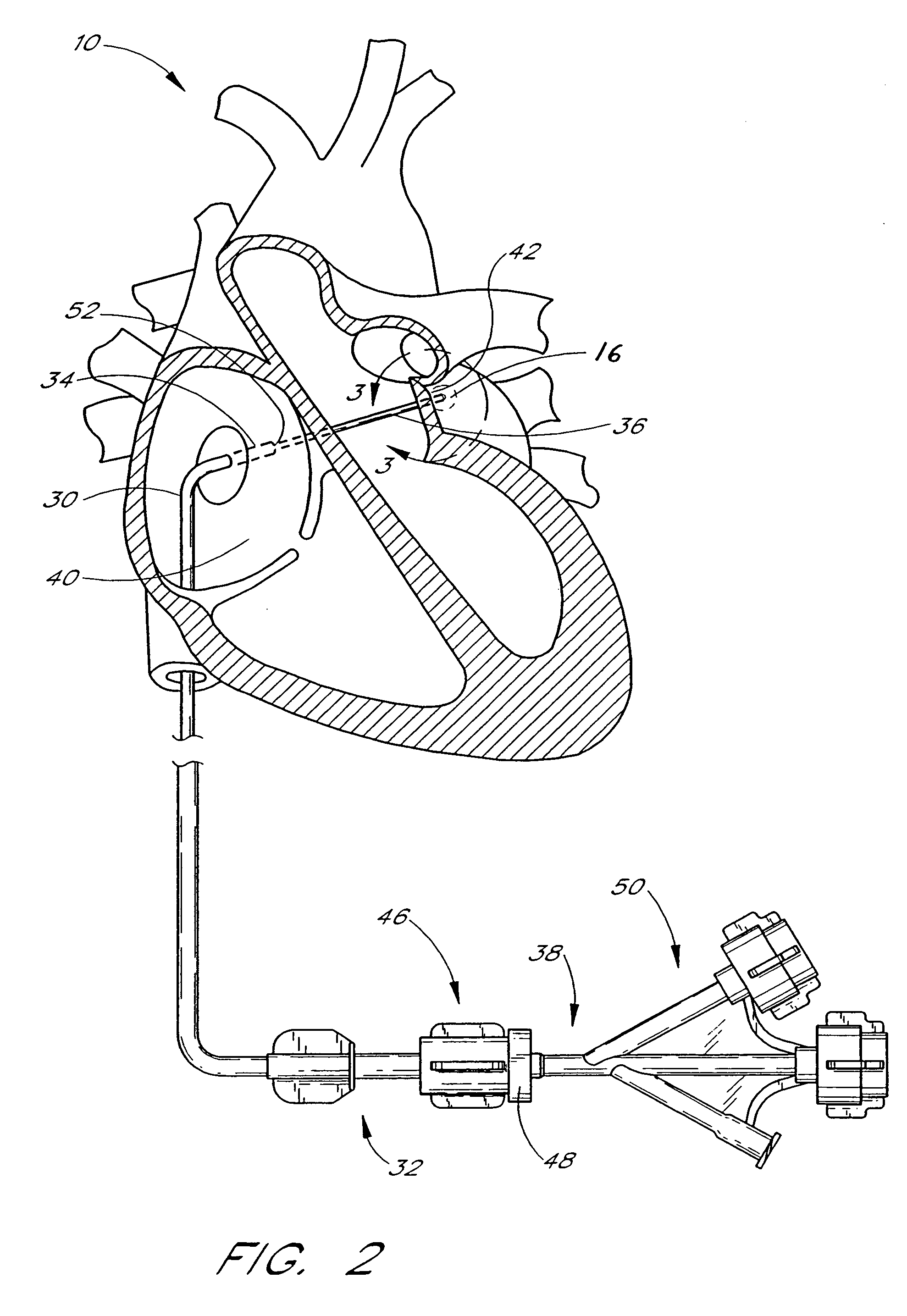Method of securing tissue
a tissue and anastomosis technology, applied in the direction of surgical staples, applications, mechanical equipment, etc., can solve the problems of recurrence of angina, myocardial infarction and death, and high cost of such procedures, and achieve the effect of reducing the risk of anastomosis
- Summary
- Abstract
- Description
- Claims
- Application Information
AI Technical Summary
Benefits of technology
Problems solved by technology
Method used
Image
Examples
Embodiment Construction
[0043]For simplicity, the present invention will be described primarily in the context of a left atrial appendage closure procedure, and as modified for use in tissue-to-tissue or synthetic graft-to-tissue anastomosis. As used herein the term “anastomosis” shall include securing a tubular synthetic graft within a vessel, such as to span an aneurysm, as well as the end to end and end to side orientation discussed in the Background of the Invention. However, the device and methods herein are readily applicable to a wider variety of closure or attachment procedures, and all such applications are contemplated by the present inventors. For example, additional heart muscle procedures such as atrial septal defect closure and patent ductus arteriosis closure are contemplated. Vascular procedures such as isolation or repair of aneurysms, anastomosis of vessel to vessel or vessel to prosthetic tubular graft (e.g., PTFE or Dacron tubes, with or without wire support structures as are well known...
PUM
 Login to View More
Login to View More Abstract
Description
Claims
Application Information
 Login to View More
Login to View More - R&D
- Intellectual Property
- Life Sciences
- Materials
- Tech Scout
- Unparalleled Data Quality
- Higher Quality Content
- 60% Fewer Hallucinations
Browse by: Latest US Patents, China's latest patents, Technical Efficacy Thesaurus, Application Domain, Technology Topic, Popular Technical Reports.
© 2025 PatSnap. All rights reserved.Legal|Privacy policy|Modern Slavery Act Transparency Statement|Sitemap|About US| Contact US: help@patsnap.com



